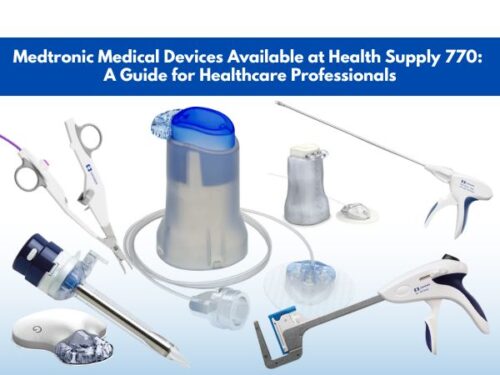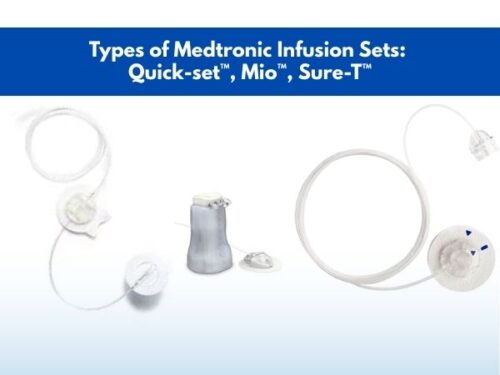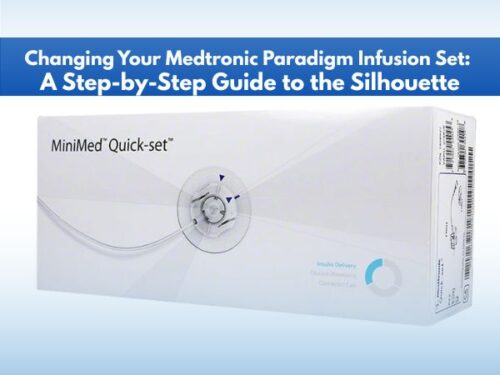What is the Difference Between a Butterfly Needle and a Normal Needle?

The use of needles in medical procedures is an everyday practice. From obtaining a blood sample to injecting a drug solution into the body via muscular, subcutaneous, or intravenous route, hypodermic needles find extensive applications in hospitals. Among their different types, normal or regular straight needles and butterfly needles are prominent. Although both of these are useful in many ways, each one has its own merits as well as demerits.
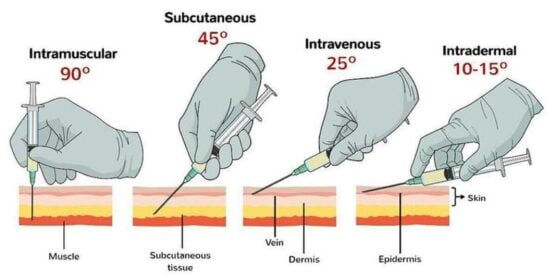
Hypodermic needles being used to deliver angled injections
Normal needles
Normal needles, or as they are called, straight needles are the hypodermic needles used to obtain a blood sample or deliver medication to the body. These have a needle or cannula attached to a needle hub.
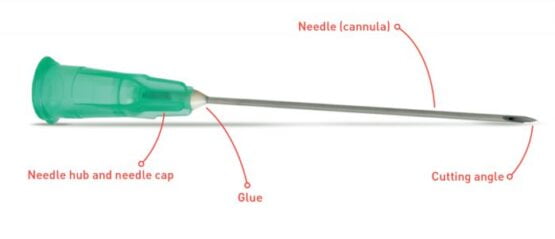
A normal hypodermic needle
Advantages of normal needles
Normal needles offer a number of advantages which are enlisted below:
- Normal needles have a longer length which is suitable for the rapid delivery of larger volumes of fluids into the body.
- Blood collection using a normal needle is a quicker process.
- With normal needles, the risks of needlestick incidents are lower as compared to those with other types of needles.
- Normal needles are cheaper than butterflies or other types of needles.
- The risk of blood clotting into the needle is lesser with straight needles.
Applications of normal needles
Normal or straight needles have the following applications:
- These are perfectly suitable for injecting larger volumes of liquids as well as gases into the body.
- Normal needles are the phlebotomist’s first choice to withdraw blood samples from veins.

A normal needle
Disadvantages and limitations of using a normal needle
Although normal needles are everyone’s first choice when it comes to blood sampling or infusing medications, these may have some disadvantages as well as limitations:
- Patients experience pain while a normal needle is being injected into the vein.
- These are not suitable for drawing a blood sample from smaller or highly fragile veins.
- It can rupture the vein or the surrounding area if not placed properly.
- Swelling around the area where the needle has been inserted is common.
Butterfly needles
Butterfly needles, also known as winged infusion sets or scalp vein sets, are single-use medical needles bearing plastic wings around them which help to handle the needle while insertion. Before use, these are attached to plastic tubing and secured with a Luer lock or hub.
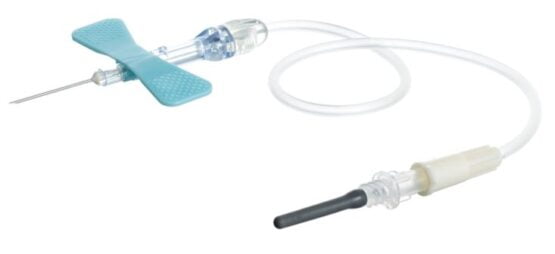
A butterfly needle attached with a winged-infusion blood collection system
Advantages of butterfly needles
Butterfly needles are superior to regular straight needles in many ways such as:
- It is less painful or a completely painless process to insert a butterfly needle than a normal one due to its smaller size as compared to that of a straight needle.
- Its plastic wings provide flexibility while the needle is being inserted at a particular angle into the patient’s veins.
- Butterfly needles are easy to handle due to their wings.
- These are available in different sizes i.e. 18 to 27 gauge with the needle becoming thinner with increasing number. 21G, as well as 23G gauges, are commonly employed.
- Butterfly needles can be used on veins of hands, wrists, or scalp.
Applications of a butterfly needle
In hospitalized patients, butterfly needles serve the following purposes:
- Butterfly needles are convenient to use for drawing and collecting blood samples for laboratory examination. These are better than IV catheters due to a 50% reduction in blood breaking while sampling.
- These can also be used for IV hydration to stabilize a patient with severe dehydration or before a surgical procedure.
- Butterfly needles also find application in blood donation as in that case, the needle is to be placed inside the vein for a longer period of time. Butterfly needles, due to their flexible tubing, provide the advantage of moving the hand while blood donation thus are easy on the donor.
- Drugs can easily be administered to the patients via intravenous or IV route using a butterfly needle system.
- It is preferred over normal straight needles in the case of elderly patients, children, or infants.
- These are the needles of choice if a smaller or highly collapsible vein is to be targeted for drug administration or blood sampling.
- If the patient feels discomfort with a normal needle, a butterfly needle should be used as it is smaller in length and thus less painful.
Disadvantages and limitations of using a butterfly needle
Butterfly needles, however safe and easy to use, bear the following disadvantages as well as limitations:
- In the case of a butterfly needle-based infusion system, the actual needle is left in the vein after the initial venipuncture. However, if an IV catheter is used, the needle has a soft plastic covering on it. Both the covering and the needle are inserted into the vein, once correctly placed, the needle is retrieved while the plastic covering remains inside to serve the purpose of infusion.
- Butterfly needles can damage the vein in which it is placed or the nearby tissue.
- Butterfly needles are recommended to be used for a time period not exceeding 5 hours.
Conclusion
The employment of needles as a medical instrument in hospitalized subjects as well as outpatients is an everyday need. For this purpose, normal as well as butterfly needles are frequently chosen. Although both have their benefits, some disadvantages, as well as limitations, are present. Normal needles are easy to use and inexpensive so they become a preferred choice for phlebotomists for drawing blood samples or injecting medications via the IV route.
However, these come with the limitation of not being suitable for smaller venules along with being painful for the patient. On the other hand, butterfly needles do not cause much pain to the patients and are suitable for fragile veins as well but they take a longer time to administer fluids in the body. Hence, the choice of needle is dependent on the condition of the patient as well as the purpose it needs to fulfill.
